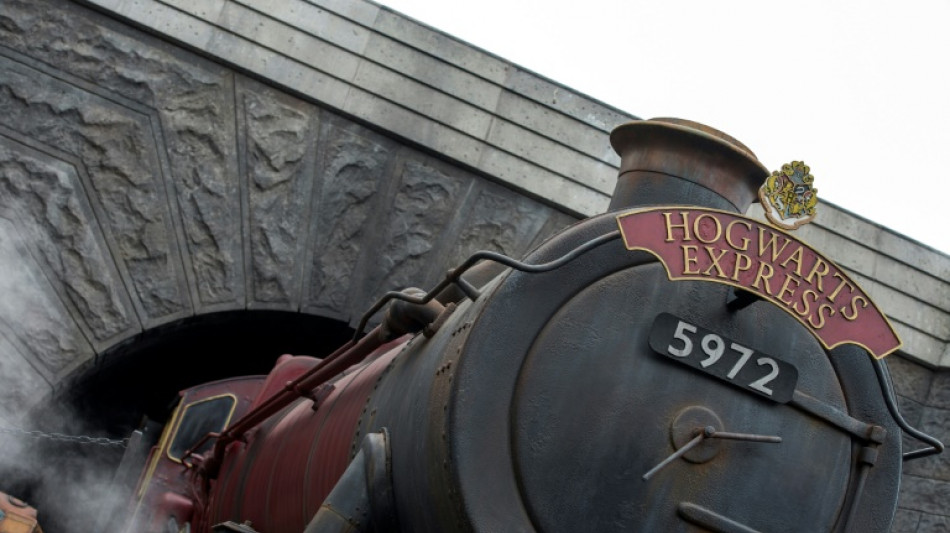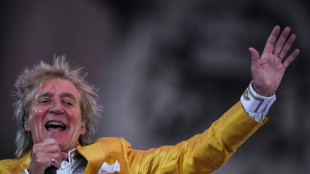

Sex, death and madness on the night train from Tolstoy to Bond
The return of the sleeper train from Berlin to Paris is a reminder of the romance of railways that has long inspired writers, musicians and filmmakers.
One of the first-ever films, the 50-second "Arrival of a Train at La Ciotat Station", reportedly terrified audiences in 1896 who thought they were about to be squashed in their seats.
Long before and since, trains have provided a setting for love, mystery and danger in some of the most enduring works of art.
- Love and intrigue -
Despite the romance, night trains fell out favour early this century, and most lines in Europe closed in the 2010s.
But with growing demand for low-emission forms of travel, several European countries are now looking into bringing them back.
On Monday, a number of government ministers were on hand as the first Berlin-Paris night train in nine years left the German capital on its 10-hour journey to Paris.
The service will run three days a week in each direction before going daily in October 2024.
Night trains became trendy after World War I as prices fell and Europeans sought a break after the war, said Andrew Martin, author of "Night Trains: The Rise and Fall of the Sleeper".
A whole genre of books and films emerged, most famously Agatha Christie's "Murder on the Orient Express".
"Night trains evoke crime, sex and intrigue," Martin said. "It's an enclosed setting, like a country house, perfect for a mystery."
Railways were a place for life-changing romance in David Lean's classic "Brief Encounter" and Richard Linklater's "Before Sunrise".
One of the most iconic moments in Bollywood history was superstar Rajesh Khanna serenading his beloved from his jeep as she rode the Darjeeling toy train in 1969's "Aradhana".
Alfred Hitchcock used trains repeatedly -- a place to hatch conspiracies ("Strangers on a Train"), disappear ("The Lady Vanishes") or fall in love ("North by Northwest"), the latter ending with the much-parodied sexual innuendo of a train entering a tunnel.
Journeying through the night is exotic, Martin said.
"And you can move around," he added. "You can't murder someone on a plane and then go back to your seat."
- Action -
High speed and cramped spaces have made for memorable cinematic set-pieces.
Tom Cruise leapt between a helicopter and a train in the first "Mission: Impossible" and clambered up falling carriages in the most recent.
James Bond is a train enthusiast, from Sean Connery's bruising carriage fight in "From Russia With Love" to Daniel Craig plummeting off one in "Skyfall", via Roger Moore dressed, cringe-inducingly, as a gorilla on a circus train in "Octopussy".
Few have matched the chutzpah of Buster Keaton, whose dedication to realism saw him drive a real locomotive onto a collapsing bridge for 1926's "The General" -- the costliest stunt in silent movie history.
Another Bollywood landmark was the fast-paced train robbery with its galloping horses in 1975's "Sholay".
- Music and painting -
Songwriters have loved the metaphor of trains bringing them home or veering off-track.
Johnny Cash dreamed of the "train-a-comin'" to take him away from his cell in "Folsom Prison Blues", while the US band Soul Asylum saw depression as a "Runaway Train".
Cat Stevens called for a "Peace Train" to end the Vietnam War; Ozzy Osbourne feared the Cold War had driven him "off the rails on a crazy train".
Billowing smoke, movement and modernity were ideal fodder for experimental painters.
JMW Turner's "Rain, Steam, and Speed" is one of his most celebrated works, while Claude Monet's 12 paintings of the Gare St Lazare station in Paris were his first series on a single theme.
- Social commentary -
Sceptical of rapid technological change, Leo Tolstoy made trains a harbinger of doom and death in "Anna Karenina".
In Emile Zola's "The Beast Within" they are relentless machines, mirroring the protagonist's descent into madness.
Trains connect people but can also pull families apart, as they do in Yasujiro Ozu's classic film, "Tokyo Story".
Their arrival could signal the end of an old way of life, such as the villains arriving by train in Sergio Leone's "Once Upon A Time In The West".
Or they could mark the demise of civilisation, like the train in "Snowpiercer", a graphic novel, film and TV series, as an authoritarian prison for the last survivors of a climate apocalypse.
A.Schneider--MP




